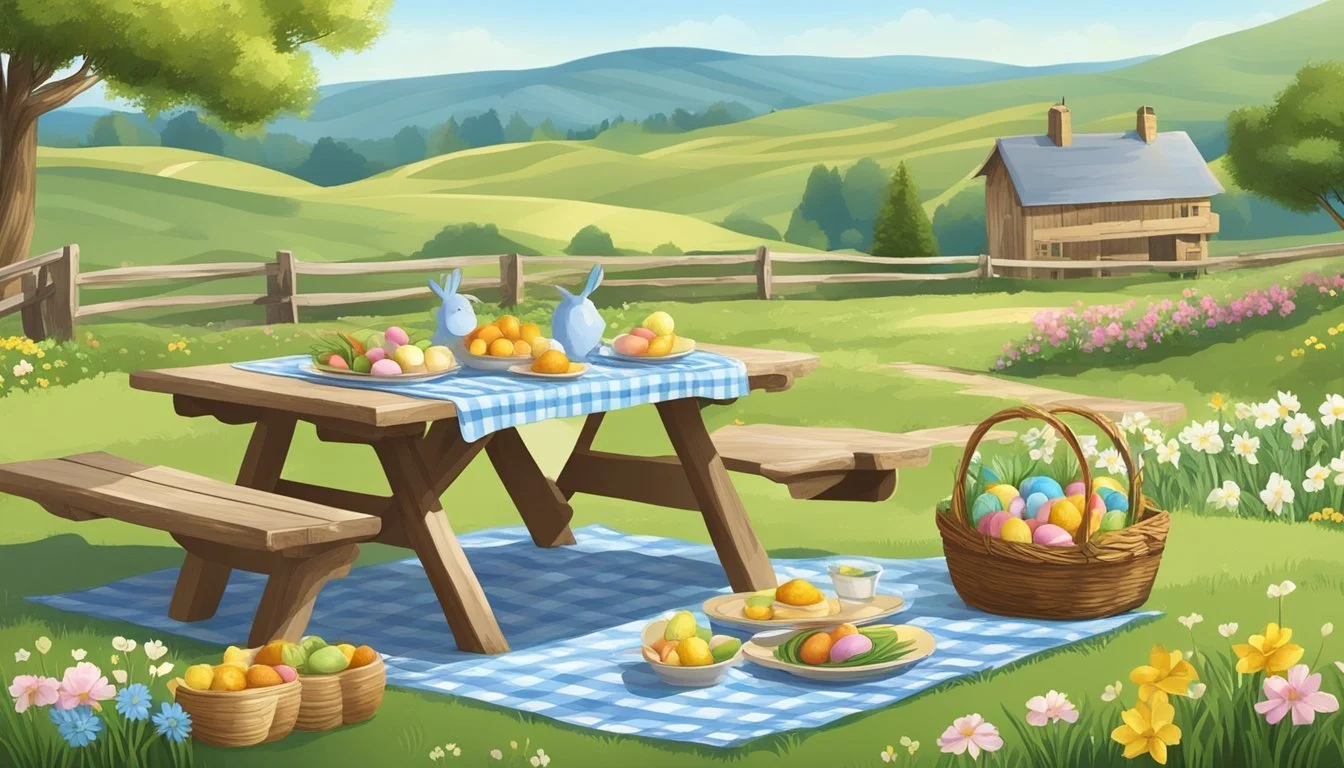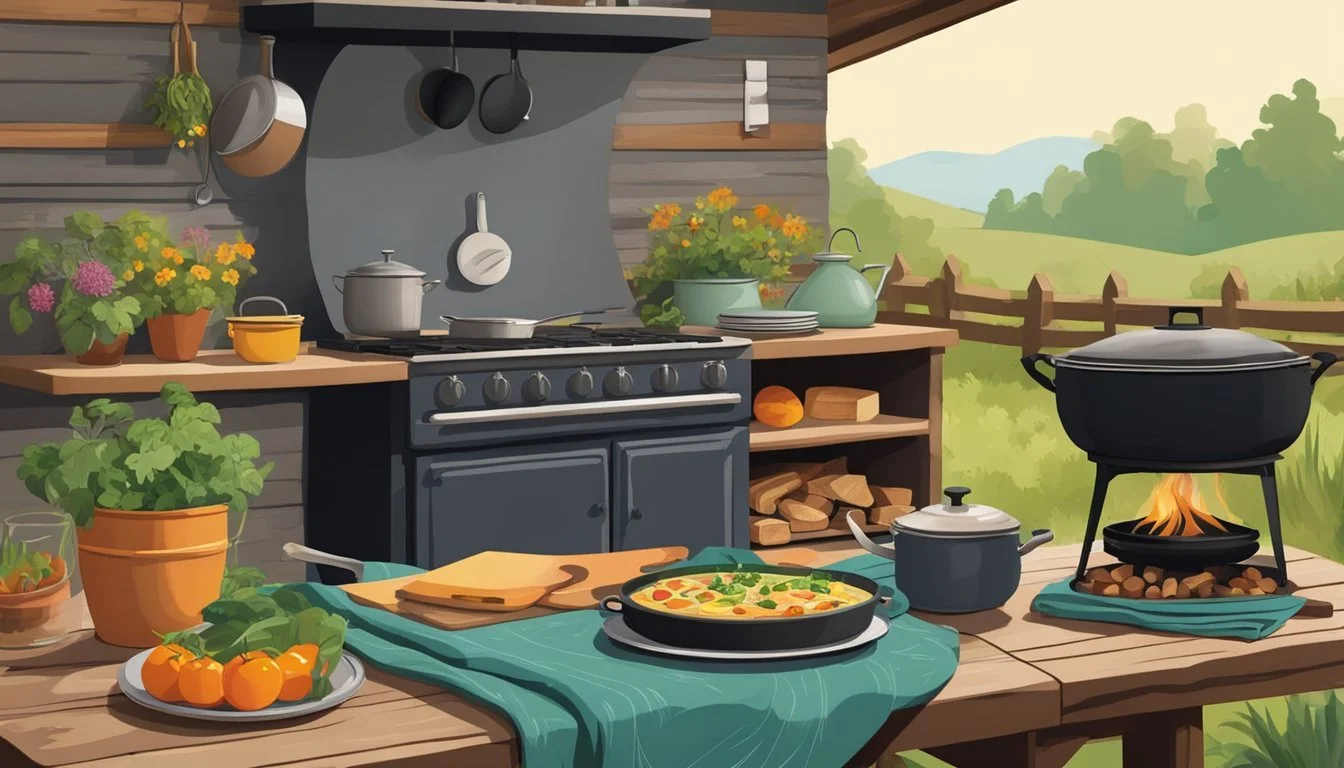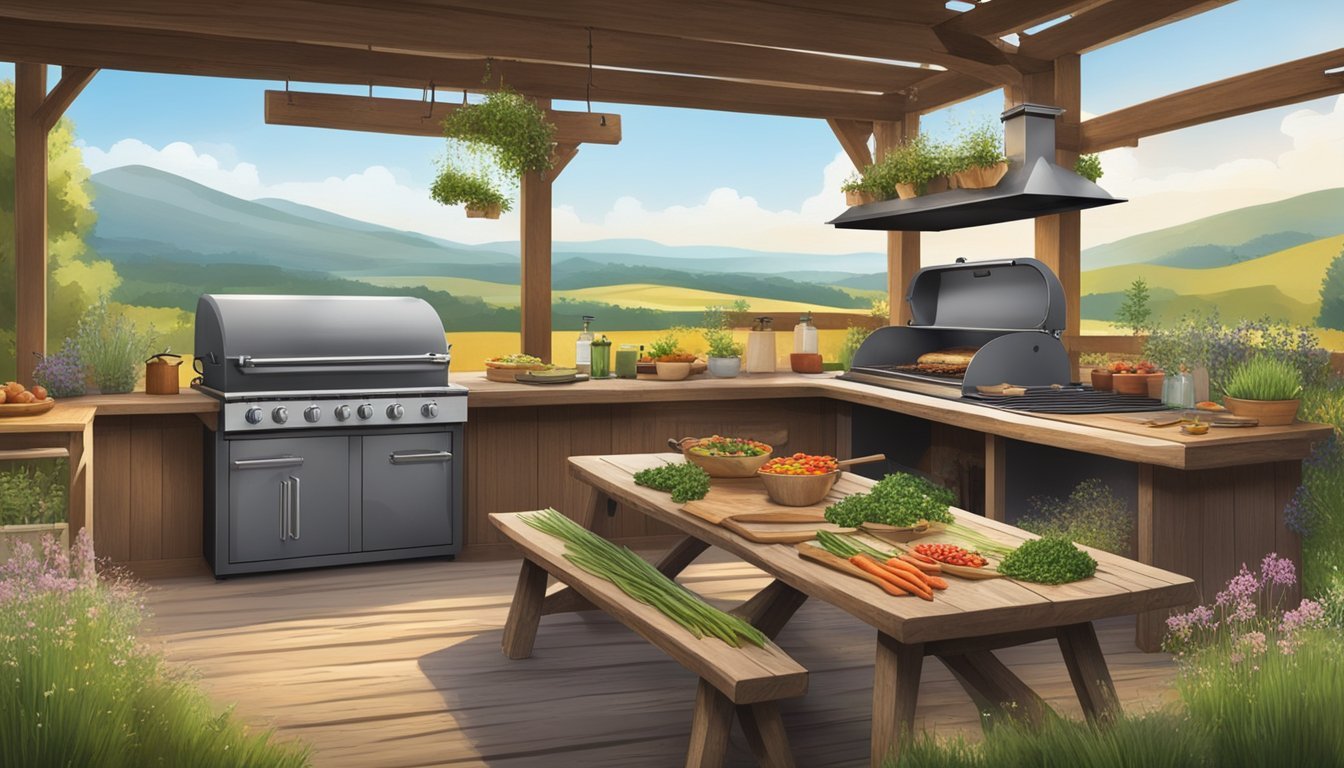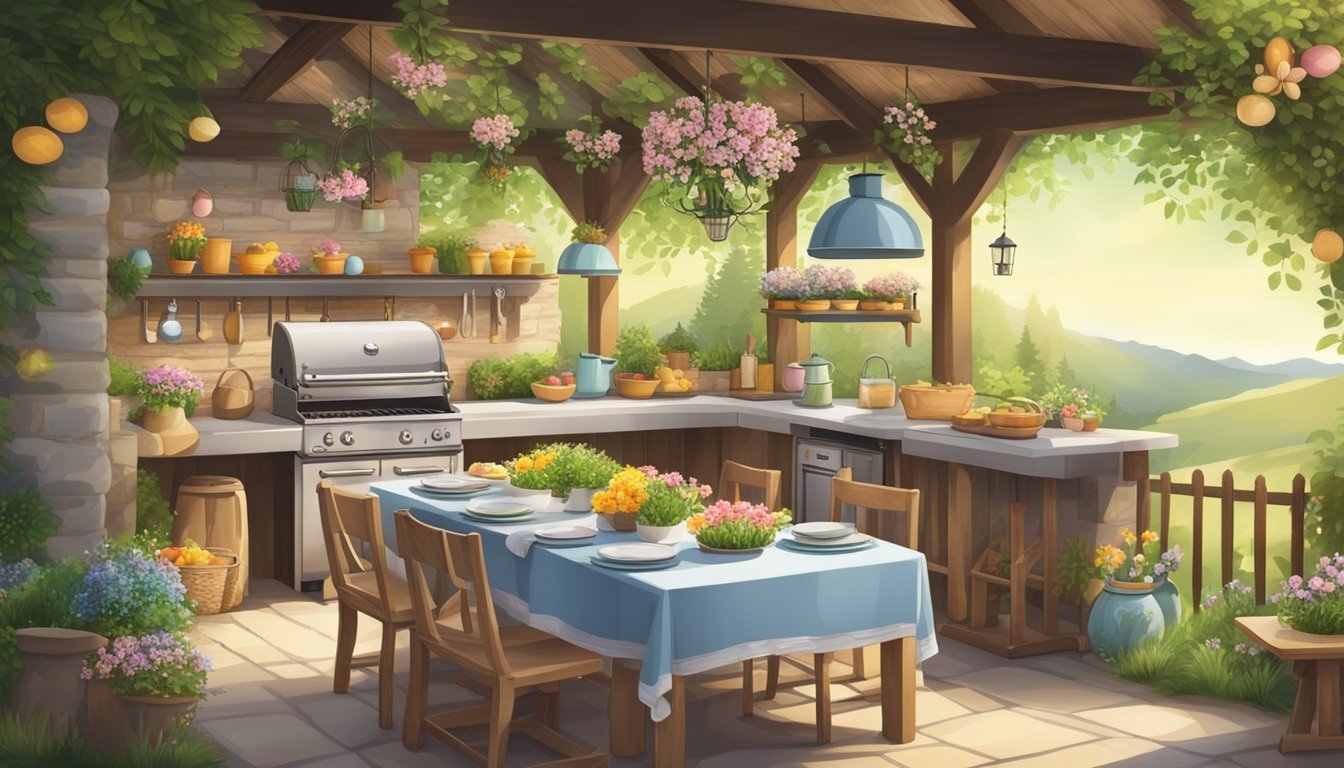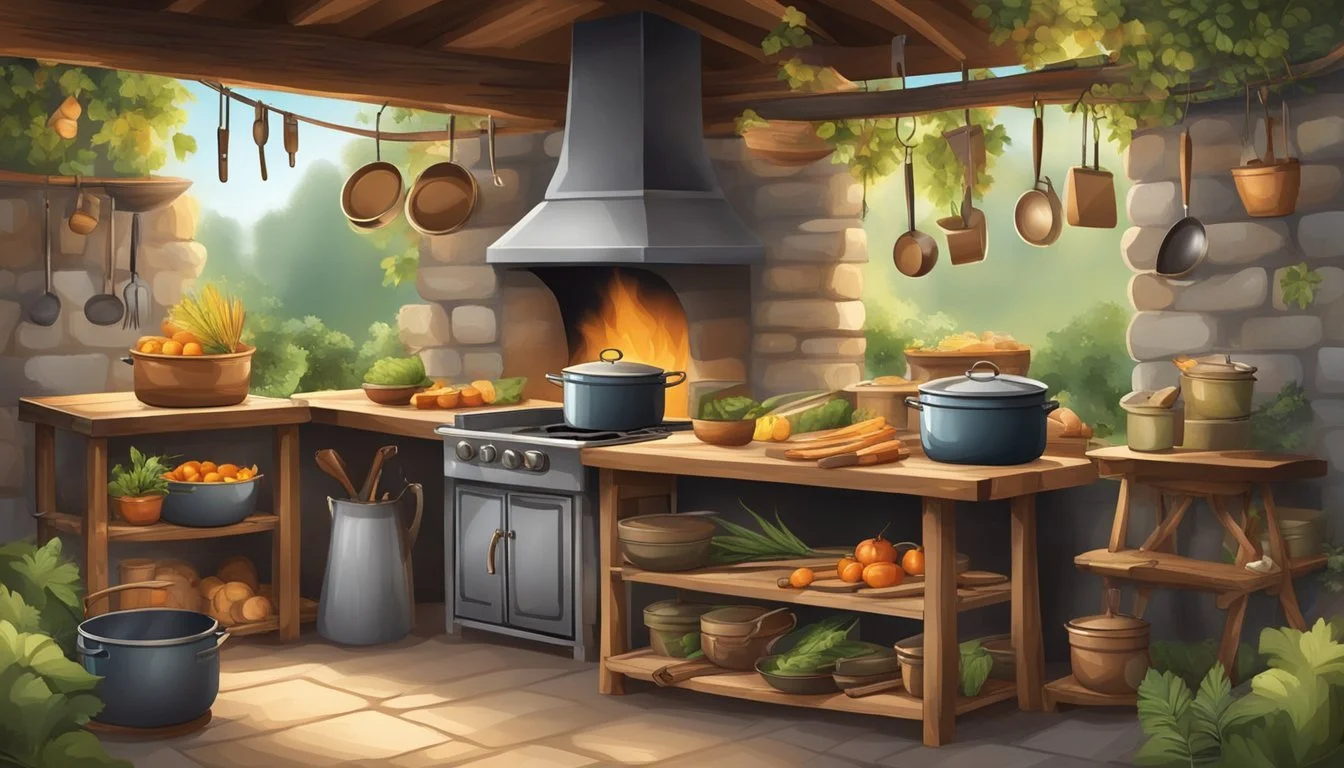Countryside Easter
A Guide to Outdoor Cooking Essentials
Easter in the countryside brings to mind images of nature's reawakening and the joy of gathering with friends and family in the great outdoors. This time-honored festival offers a unique opportunity to take the celebrations outside, embracing the crisp spring air and the natural beauty that rural settings provide. Outdoor cooking becomes not just a means of preparing a meal, but an event in itself, allowing for the creation of both delicious food and cherished memories.
As enthusiasts prepare for a Countryside Easter, they turn their attention to the traditional and innovative ways that meals can be enjoyed under the open sky. With a myriad of techniques ranging from live fire cooking and grilling, to utilizing cast iron pans and dutch ovens, the options for preparing an Easter feast are as vast as the countryside itself. Whether it is slow-cooking a leg of lamb over embers or grilling fresh vegetables harvested from the garden, the experience of outdoor cooking adds a layer of rustic charm to the Easter table.
Outdoor cooking during an Easter celebration requires thoughtful preparation and a willingness to embrace the unpredictable elements nature may offer. Hence, planning a Countryside Easter involves selecting appropriate recipes, gathering necessary equipment, and understanding the fundamentals of cooking with natural heat sources. As families and friends congregate, they share not only a meal but also the responsibility of stewarding the land, ensuring that their countryside retreat remains unspoiled for Easters to come.
Planning Your Easter Countryside Cooking Adventure
Easter in the countryside presents a unique opportunity for outdoor cooking enthusiasts to explore new flavors and techniques. The key to a successful cookout lies in choosing the right equipment, understanding the cooking methods suited for the outdoors, and maintaining safety throughout the process.
Selecting the Right Equipment
The selection of cookware is paramount for any outdoor cooking adventure. A cast iron skillet is versatile and can withstand high temperatures, making it ideal for searing and frying. For soups and stews, one should consider bringing a dutch oven, which is excellent for even heat distribution. Aluminum foil is a must-have for wrapping vegetables and other items for easy cooking on coals or a grill. Essential tools like tongs and an oven mitt are also crucial for handling hot cookware.
Cookware Essentials:
Cast iron skillet
Dutch oven
Aluminum foil
Tongs
Oven mitt
Understanding Outdoor Cooking Techniques
Outdoor cooking requires an understanding of various techniques and how to regulate temperature for perfect results. A camp stove allows for controlled heat, suitable for recipes that require consistency. A solar oven harnesses the power of the sun and is great for slow-cooking dishes. When using coals from a campfire or a grill, mastering the distribution of heat is essential to avoid undercooking or burning food.
Temperature Control:
Use a camp stove for consistent heat.
Solar ovens are ideal for slow-cooking without fuel.
Arrange coals evenly for a uniform cooking temperature.
Safety Considerations and Tips
Safety is crucial when cooking outdoors. Always gear up with protective equipment like an oven mitt to handle hot cookware. Keep a safe distance from the open flames, especially when adding fuel. Be mindful of cooking temperatures to ensure food is cooked thoroughly and avoid food-borne illnesses. Never leave the cooking area unattended and have a fire extinguisher or water source nearby in case of emergencies.
Safety Checklist:
Protective gear (oven mitts, aprons)
Safe distance from flames when adding fuel
Regular temperature checks
Fire extinguishing equipment at hand
Preparing The Easter Menu
Easter menus, when crafted with care, balance tradition with a touch of nature's spring bounty. For those celebrating in the countryside, incorporating outdoor cooking methods brings an enticing aroma and a rustic charm to the dining experience.
Appetizers and Starters
Easter meals typically begin with a range of appetizers that tease the palate and set the tone for the feast. A countryside Easter might include starters like:
Paleo Avocado Deviled Eggs: A fresh take on a traditional favorite, featuring ripe avocados.
Asiago-Artichoke Dip: Served with slices of a rustic baguette, its creamy texture complements the outdoor setting.
Main Courses
The mark of an Easter celebration is often its main course, where meats take center stage. A countryside menu could include recipes such as:
Stuffed Spiral Ham: An Easter classic that can be prepared ahead and finished on the grill for a smoky flavor.
Herb-Crusted Lamb: Roasted over an open fire, lamb imbues the air with a rich aroma.
For those preferring alternatives to meat:
Whole Grilled Fish: A lighter option that absorbs the smokiness from the grill.
Vegetable and Cheese-Stuffed Pasta: Satisfying and versatile, perfect for an outdoor potluck-style gathering.
Delightful Desserts
No Easter meal is complete without desserts that charm and delight. Some options to consider:
Brown Butter Easter Egg Blondies: Easy to make and packed with festive colors.
Rustic Fruit Galettes: Utilizing seasonal fruits and cooked in a cast-iron skillet over the embers.
Cooking Techniques and Best Practices
Outdoor cooking during Easter presents an excellent opportunity to explore various cooking techniques. Utilizing the right methods and best practices ensures that everything from a whole chicken to simple rice and grits can be prepared with precision and flavor.
Grilling Mastery
Grilling provides a distinct flavor and char that is perfect for countryside Easter meals. For grilling a whole chicken, one should maintain a medium-high heat and use indirect grilling techniques to cook the chicken evenly without burning the skin. They should always preheat the grill to ensure consistent cooking temperatures. It is essential to keep the grill clean to prevent flare-ups and avoid off-flavors.
Tools: Long-handled tongs, brush, meat thermometer
Temperature: 375°F (medium-high)
Timing: Whole chicken ~1-1.5 hours (internal temp 165°F)
Baking in the Countryside
Using an outdoor oven such as a classic pizza oven allows for versatile baking options, from bread to desserts. One must ensure the oven is heated ahead of time and that the temperature is evenly distributed. Outdoor ovens can also excel in slow-roasting meats and vegetables. Baked sides such as rosemary-infused grits or wild rice pilaf complement grilled mains beautifully.
Preparation: Allow time for the oven to reach the correct temperature.
Equipment: Pizza oven, baking stones, cast iron cookware
Check: Use an oven thermometer to monitor the temperature.
Stewing and Boiling Outdoors
Stewing and boiling are ideal for creating one-pot family meals that are both comforting and convenient for outdoor settings. Cast iron Dutch ovens are one's best friend for stews or boiling rice and grits. The steady heat retention and distribution are crucial for a consistent simmer. They should position the pot over a controlled fire or a portable outdoor stove to maintain a steady boil or simmer without rapid fluctuations.
Heating: Aim for a gentle simmer; adjust fire as needed.
Stirring: Regularly stir to ensure even cooking and prevent sticking.
By mastering these techniques and using best practices, one can guarantee a delightful outdoor Easter feast that showcases the natural flavors of the countryside.
Enhancing Flavors and Seasonings
When cooking outdoors, the key to exceptional taste lies in using the right blend of herbs, spices, marinades, and rubs. Proper seasoning can transform simple ingredients by intensifying their natural flavors, resulting in a delicious meal that captures the spirit of countryside Easter gatherings.
Herbs and Spices for the Open Air
Selecting the right herbs and spices is essential for countryside cooking. Fresh herbs (how long do fresh herbs last?) can withstand the natural elements better than their delicate indoor counterparts. For an authentic outdoor flavor, one might incorporate rosemary, thyme, or basil (how long does basil last?), which are robust enough to endure gentle breezes and the ambient warmth of the open air.
A pro tip for aspiring countryside chefs: To prevent herbs from overwhelming the dish, they recommend a judicious use of salt and pepper to balance the flavors, enhancing the natural juiciness of meats or the sweetness of grilled onions and peppers. Below is a table with suggested herbs and their pairings:
Herb Pairing Application Rosemary Lamb, Chicken, Potatoes Use in marinades or as garnish Thyme Beef, Pork, Root Vegetables Infuse in oil for basting Basil Tomatoes, Fresh Cheese Finish dishes, fresh use
Marinades and Rubs
Marinades and rubs are powerful tools that can tenderize and impart deep flavors into your Easter feast. A simple yet effective marinade can be created with olive oil, an acid such as lemon juice or vinegar, and a combination of herbs and spices. This blend not only flavors the food but also creates a barrier that helps retain moisture.
For those who prefer a dry approach, a rub made of ground spices, salt, and pepper, can be massaged directly onto the surface of meats, like a dry brine, infusing them with robust flavors before grilling. They suggest using coarse salt in rubs for enhanced texture and seasoning layering. A standard poultry rub might look like:
4 tsp sea salt
2 tsp paprika
1 tsp ground black pepper
1 tsp garlic powder
1 tsp onion powder
Outdoor Cooking Lifestyle
Embracing an outdoor cooking lifestyle involves a commitment to using fresh ingredients and understanding the impact of food choices on personal health and the environment.
From Pasture to Plate
Those who partake in outdoor cooking often prioritize the journey of food from pasture to plate. They understand that the health of the animals and the quality of the pastures where they graze directly influence the nutritional value of the food. Cooking outdoors allows for a deeper appreciation of ingredients, especially when one has a hand in raising healthy animals and harvesting food directly from the land. The process of preserving food, such as through canning or dehydration, extends the lifespan of produce and meats obtained from pastures and underscores the principles of self-sufficiency and resourcefulness.
Healthy Animals: Ensure animals have access to quality pastures, clean water, and space.
Preserving Food: Utilize methods like smoking, drying, and fermenting.
Sustainability and Environment
Sustainability plays a critical role in the outdoor cooking lifestyle. Advocates often utilize practices that reduce waste and lessen environmental impact. This extends to cooking methods that rely on renewable energy sources, such as solar ovens, or using efficient fuels that minimize emissions. The principles of sustainability advocate for responsible stewardship of the land, which includes maintaining pastures in a way that not only provides nutritious food but also supports the health of the ecosystem.
Impact Reduction: Choose low-impact cooking methods and renewable energy sources.
Nutritious Food: Focus on the growth and consumption of foods that are beneficial for both human health and the environment.
By adhering to these tenets, the outdoor cooking lifestyle promotes a harmonious relationship between taste, nutrition, and the health of the planet.
DIY Projects for the Outdoor Chef
For outdoor cooking enthusiasts who take pride in handiwork, engaging in DIY projects to enhance their culinary experience has manifold benefits. Not only does it allow for customization of cooking gear to fit individual needs, but it also instills a sense of achievement and ownership over the cooking process.
Building Your Own Campfire Cooking Gear
Building one's own campfire cooking gear is a rewarding project for any outdoor chef. Starting with the most essential tool, a tripod, outdoor enthusiasts can fashion one using three sturdy branches or metal poles, lashed together at the top using wire or rope. The tripod should be anchored firmly into the ground to ensure stability for suspending pots or grills over the flame.
Next, a grill grate can be created using metal mesh and a frame, providing the perfect surface for grilling meats and vegetables. It should be sized to fit comfortably over the flame, yet able to be moved or removed for access to the coals below.
Additionally, outdoor chefs can craft a variety of hooks and griddles for different cooking methods, from searing to slow roasting. These can be made from scrap metal or purchased steel rods, bent and shaped to suit the cooking gear.
For those skilled in metalwork, crafting a custom Dutch oven stand adds another level of sophistication to campfire cooking. The stand should be designed to hold the Dutch oven steady at an optimal height above the fire, taking into consideration the intensity of the heat.
Lastly, fixing and maintaining the DIY gear is critical for safety and efficiency. Regular inspection for wear and tear, proper cleaning after use, and safe storage will extend the life and utility of the handmade gear.
Outdoor chefs who embark on these DIY projects ensure their outdoor kitchen is not only functional but also a true expression of their craftsmanship and love for the art of cooking.
Cold Storage and Food Preservation
In the context of outdoor cooking, preserving food through cold storage is pivotal. The section explores how one can maintain optimum freshness when cooking in the countryside, focusing on the proper use of ice and coolers.
Using Ice and Coolers Effectively
To ensure food preservation during outdoor events, the use of ice and coolers is essential. Ice, when used correctly, maintains low temperatures within coolers, acting as a makeshift refrigerator. Here are details for efficient cooler usage:
Pack Strategically: Place ice at the bottom of the cooler, followed by a layer of cardboard to create a flat surface. This method helps to distribute coldness evenly.
Layering: Layer food items with additional ice between each layer to ensure comprehensive coverage and cooling.
Airtight Containers: Store food in airtight containers to retard spoilage and to prevent water from melted ice seeping in.
Keep it Sealed: Limit the frequency of opening the cooler to maintain a consistently low temperature.
By following these steps, the reader can maximize the efficiency of their coolers, keeping perishable items preserved for the duration of their countryside Easter cooking activities.
Health and Nutrition in Outdoor Cooking
Outdoor cooking can offer a plethora of health and nutritional benefits when approached with mindfulness towards ingredient selection and preparation methods. Fresh ingredients, coupled with health-conscious cooking techniques, contribute to well-being and longevity.
Choosing Ingredients for Well-Being
Local Produce: For a healthful outdoor meal, prioritize locally-sourced fruits and vegetables. They are often more nutritious, having been picked at peak ripeness, and provide an abundance of vitamins and minerals vital for health.
Leafy Greens: Opt for varieties like spinach and kale for high vitamin content.
Brightly Colored Vegetables: Include tomatoes, peppers, and carrots, known for their antioxidants.
Quality Proteins: Select lean meats, such as poultry or fish, from healthy animals raised without unnecessary antibiotics or hormones. These provide essential amino acids without excessive saturated fat.
Grass-Fed Beef: Rich in omega-3 fatty acids.
Free-Range Chicken: A healthier option with less fat compared to conventional chicken.
Whole Grains: Utilize whole grains like quinoa or brown rice. They are hearty bases that offer fiber, aiding in digestion and sustained energy levels.
Herbs and Spices: Incorporate an array of herbs and spices, not only for flavor enhancement but also for their potential herbal remedy benefits. For example, ginger and turmeric can alleviate certain ailments and reduce inflammation.
Fresh Herbs: Add basil or cilantro for a fresh taste and nutritional boost.
Spices: Use cinnamon, paprika, or cumin for complex flavors and health benefits.
By mindfully selecting ingredients that promote health and address nutrition in outdoor cooking, one can enhance the overall dining experience while supporting long-term well-being.
Practical Tips and Countryside Wisdom
In the idyllic setting of the countryside, mastering the art of outdoor cooking adds a layer of self-reliance and homely comfort. This section offers guidance to enhance your rural Easter celebrations with time-honored tips and recipes, ensuring every outdoor meal is a triumph.
Camping Recipes and Food Ideas
When it comes to campfire cooking, variety and preparation are key. Here are some campfire recipes that are perfect for an Easter feast:
Grilled Lamb Chops: Marinate lamb chops (What wine goes well with lamb chops?) in a mixture of rosemary, garlic, and olive oil. Grill over open flames until desired doneness.
Foil-wrapped Vegetables: Wrap carrots, potatoes, and onions with butter and herbs in aluminum foil. Place on hot coals and cook until tender.
Pro Tip: Always carry a small container of biodegradable soap to clean your cookware, ensuring you have sterile equipment ready for your next meal.
Ensuring Continual Enjoyment
Outdoor cooking is not just about the meal at hand; it's about fostering enjoyment for future outings. To safeguard this continuity, consider these points:
Manage Resources: Use resources like wood and water sparingly. Make careful investments in quality, reusable cookware that stands the test of time.
Embrace Certainty: In an uncertain world, the certainty of having the skills to cook in the countryside provides a sense of comfort and preparedness.
Remember, each meal prepared is an opportunity to hone skills and create timeless memories in the countryside.


